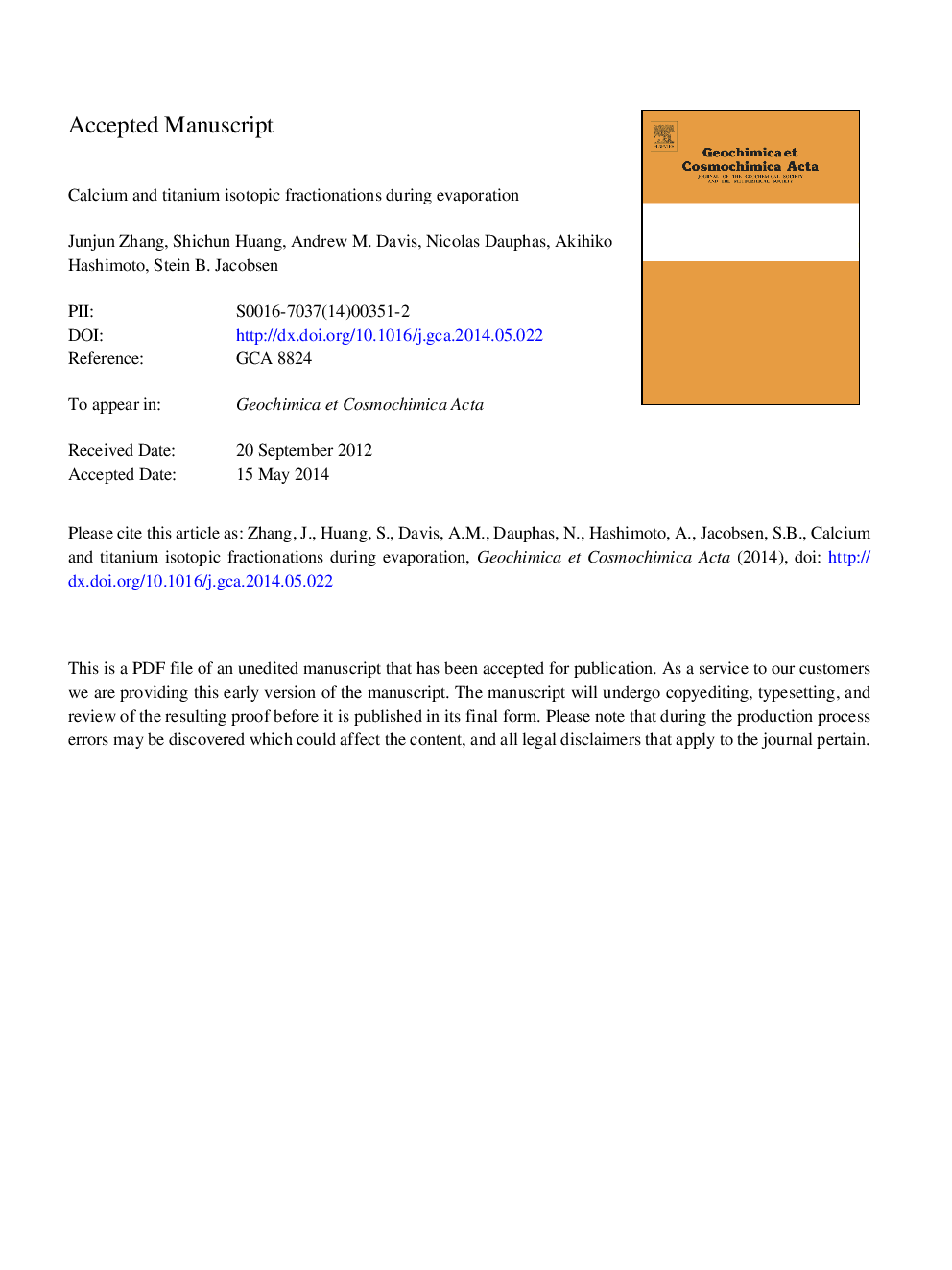| Article ID | Journal | Published Year | Pages | File Type |
|---|---|---|---|---|
| 6438374 | Geochimica et Cosmochimica Acta | 2014 | 47 Pages |
Abstract
Isotope fractionations associated with high temperature evaporation provide important constraints on the physicochemical processes that affected planetary materials at the birth of the solar system. Previous evaporation experiments have focused on isotopic fractionation of moderately to highly volatile elements. Here, we investigate the isotope fractionation behavior of two highly refractory elements, calcium and titanium, during evaporation of perovskite (CaTiO3) in a vacuum furnace. In our experiments, isotope fractionation during evaporation follows the Rayleigh law, but not the commonly used exponential law, with the dominant evaporating species being Ca(g) and TiO2(g). If isotope fractionations in early solar system materials did follow the Rayleigh law, the common practice of using an exponential fractionation law to correct for mass-dependent fractionation in the study of mass-independent fractionations may introduce significant artificial isotope anomalies.
Related Topics
Physical Sciences and Engineering
Earth and Planetary Sciences
Geochemistry and Petrology
Authors
Junjun Zhang, Shichun Huang, Andrew M. Davis, Nicolas Dauphas, Akihiko Hashimoto, Stein B. Jacobsen,
